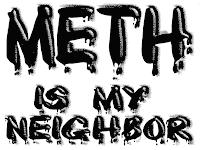Farmers in Illinois and other agricultural states have an unwanted connection to methamphetamine use. Common agriculturally crucial chemicals are being stolen from farms, and used in illegal drug labs to make the highly addictive drug methamphetamine.
The stakes are driven even higher by citizens (in both rural and urban areas) who are exposed unknowingly to various chemicals when they move into a home or apartment that was once used as a meth lab. Health problems and even death can be the result.
In Illinois, 5% of all deaths are related in some way to the use of drugs or alcohol. That is over 5,500 Illinois residents per year! And over 4,000 of the state’s residents die each year from accidental injuries that are related to alcohol.
Illinois provides both preventative programs and active treatment options for its citizens. While meth use is only one of many substance abuse drugs, it is one of the most problematic for its negative social, fiscal, health and ecological impact.
View Original Post, Meth Labs Affect Farm Security in Illinois
Tweet
















